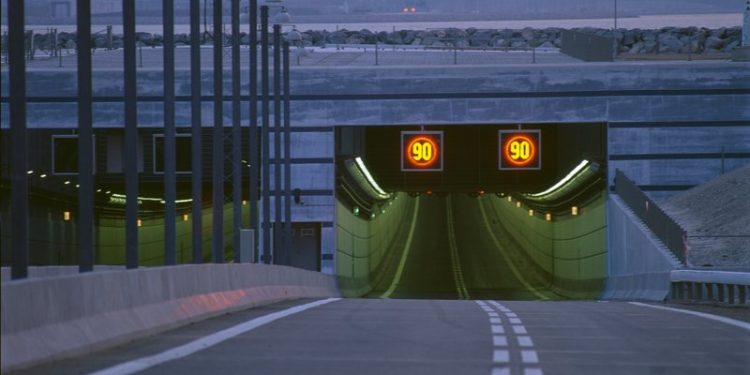More safety on Denmark’s important bridges

After several incidents with crazy speed driving, and in general too high-speed levels on the bridges, new measures are to be implemented to augment safety.
The article continues below.
By Bente D. Knudsen
Denmark’s two main bridges are key to the country’s infrastructure and if, due to accidents, they have to be closed for longer periods of time, this greatly affects traffic across the country.
Unfortunately, they have also been targets of crazy speeding, where drivers at high speed take and post videos of themselves while for instance driving through the tunnel of the Øresund’s Bridge.
“In general, in the police speed checks, very high speed levels have been measured, levels which expose both the driver and other motorists to serious and major risks. Therefore, it is with pleasure that we are now on track to get an average speed control system, something we have been asking for on the bridge for many years,” says Caroline Ullman-Hammer, CEO at Øresundsbro Konsortiet.
Over the years, the Øresund’s Bridge has received views from customers who want a more efficient speed control.
These are motorists who have experienced a vivid sense of insecurity when others have passed them at extreme speeds without taking into account other road users.
The article continues below.
Accidents in tunnels tend to be more serious than on an open road, as the vehicle for instance may run into the tunnel walls, or both into the walls and other vehicles, and in the worst case scenario, a fire may develop, which can have serious consequences in a tunnel.
Also, on bridges, it is more difficult for rescue vehicles to operate as the accessibility is more limited than on an open road.
The average speed control system is to be implemented on both the Øresund’s bridge and the Storebælt’s bridge.
The article continues below.
It is a fairly new automatic speed control system, also known as “section control” or “point to point control”.
It measures the average speed over a road section of between two to five km by identifying a vehicle at an entry point by registering the license plate number, and it will register the same vehicle again when it leaves the control section or at a second selected point on the control section. The average speed can then be calculated based on the time interval between these two points.
According to the EU Transport Commission, the effect of the average speed control has been very positive, it works 24 hours a day, 7 days a week, which means the chance of being caught is close to 100 percent.
On a stretch of road where average speed control is employed, most drivers obey the speed limit. On sections where speed limits were frequently exceeded in the past, average speed control can bring back the number of offences to a few percent, or even less than one percent.
Øresundsbro Konsortiet will be part of a project group, which together with the Danish authorities will work on an implementation plan for average speed control on the two bridges.

